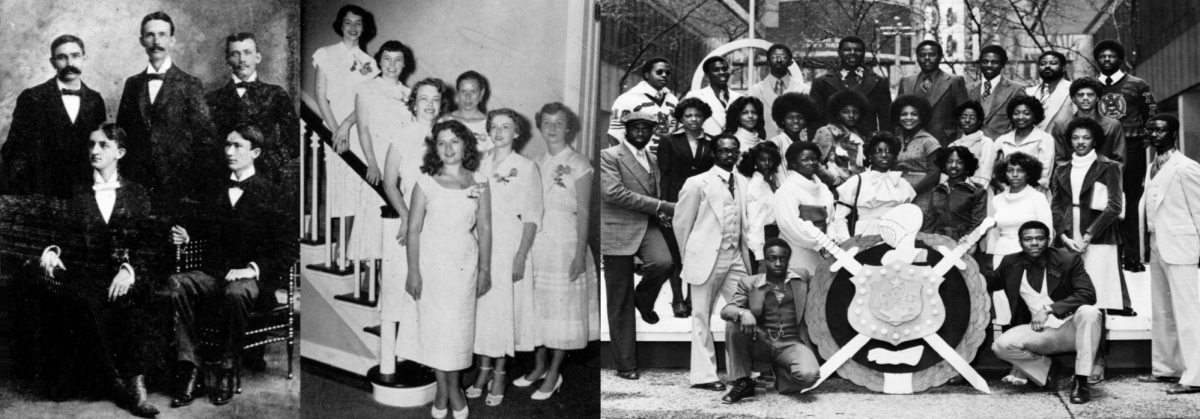
We have been around since the beginning of Georgia Tech; actually even before Tech opened its doors to students! The Beta Iota Chapter of Alpha Tau Omega (ATO) was established on September 18, 1888, one month before classes officially began for the institute. Georgia Tech’s first president, Isaac S. Hopkins, had been an ATO at Emory University. Hopkins felt that the new school would need an organization to instill leadership for the men to survive and prosper. Growth continued into the 1930s, but with the onset of World War II, Greek life became stagnant. In fact, most of Tech’s present day fraternities were founded before the war. However, with the return of soldiers on the GI Bill post-war, Greek life prospered once more as the population of Tech’s campus boomed. And several new fraternity chapters were chartered into the 1950s.
While it took a while to allow for women to attend Georgia Tech, finally coming along in 1952, it did not take long after that for the first sorority to establish here. Greek life at Tech took a monumental turn when President Van Leer’s wife, Ella, introduced the concept of sororities to the women here. Mrs. Van Leer, an Alpha Xi Delta alumnae gathered five female students at the President’s house. There, she introduced them to officials from Alpha Xi Delta. The female students were so impressed by Alpha Xi Delta that on September 4, 1954, they chartered a chapter at Tech. This move pioneered the way for sororities to make their way onto campus. The next sororities would not come to campus until the female population dramatically increased in the 1970s.
By the 1960s, Tech offered a plethora of chapters for men to visit during rush. One of the movements of IFC during the 1960s was the introduction of Greek Week, a competition meant to provide a healthy outlet for chapters to annually compete against each other. Also crafted in the 1960s was the Best Fraternity Award, (now known as the Dean Dull Awards) usually dedicated at the culmination of Greek Week. Additionally, Tech offered intramurals throughout the year where fraternities could play against each other in various sports like football, softball, basketball, etc. The 1960s and 70s also saw a building boom amongst Tech’s fraternities. Most chapters had outgrown the small, craftsman bungalows that dotted the Techwood Drive corridor. Larger, more commercial houses were constructed. These houses often included dedicated chapter space, kitchen facilities, common spaces, and sometimes swimming pools.
Another huge move forward for the Greek community came on November 20, 1976 when Omega Psi Phi chartered at Tech. As Tech’s first National Pan-Hellenic Council (NPHC) fraternity, this opened the doors for African-American students to create a community for themselves and have more of an identity on campus. The Multicultural Greek Council would soon come to campus, bringing a diverse offering of fraternities and sororities to Georgia Tech. This growth would continue into the early 1990s with new chapters of every council forming.
1990 was a huge year for Atlanta, as the International Olympic Committee chose the city to be the host for the 1996 Centennial Olympics games. Not only was Atlanta to play host, Georgia Tech would be the Olympic Village. Campus was dramatically altered during the six years before the games and many fraternities found it the perfect time to rebuild their aging structures, resulting in another housing boom. Some houses even received some of the Olympic money to incentivize rebuilding. In exchange, some houses hosted Olympics officials or athletes during the summer of 1996.
Each year, the Greek community hosts big events beginning with fall recruitment. Even if you are not interested in going Greek, recruitment is a great way to meet new people at Tech, especially when you are new to campus/Atlanta. Since President Hopkin’s introduction of ATO, Tech’s Greek community has continued to flourish for over 134 years.
Written by Adam Caracci, CE '14 - Theta Xi